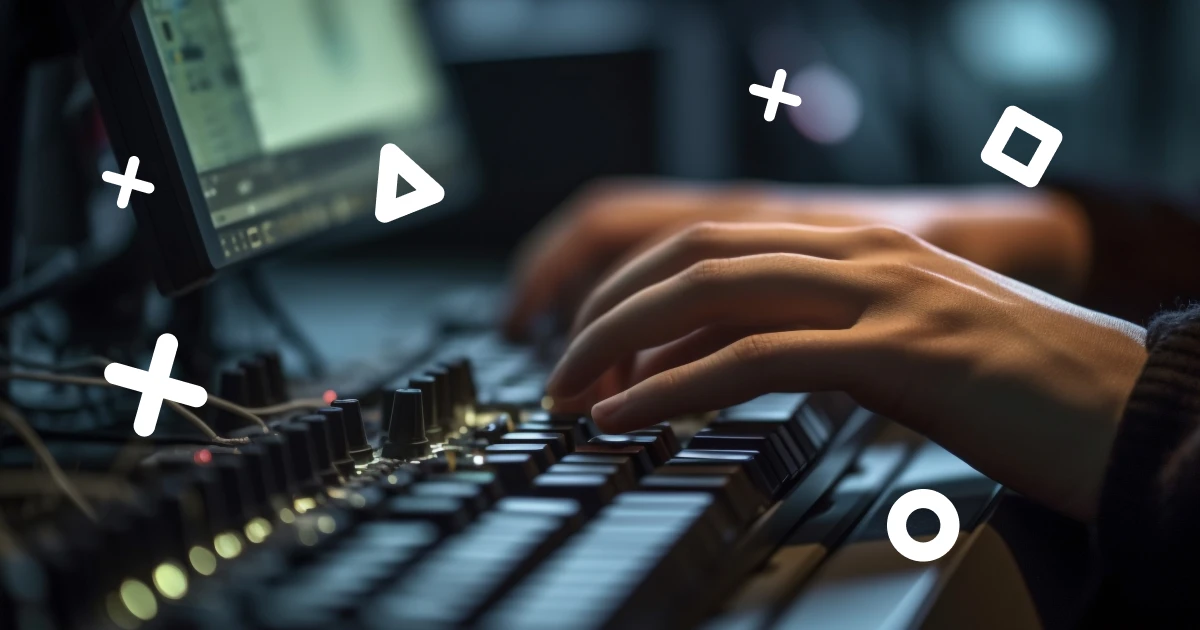With the ever-advancing technologies, the world of gaming is also evolving in new ways. One of the most essential factors in these changes is audio technologies, which with their capabilities and features, bring players’ experience to a new level of reality and closer connection with the virtual world.
In this blog post, we aim to explore the effects and impacts of sound technology on the future of game development, and delve into the opportunities and potentials that these technologies offer to game developers. From 3D sound technologies to virtual reality and advanced audio enhancements, we intend to examine the trends in audio evolution in gaming and take a look at the exciting and fascinating future that these technologies hold.
By accompanying us on this journey into the exciting world of audio technology in game development, we hope that this article will help provide a better understanding of its importance and impacts on the gaming industry and address the challenges and opportunities ahead for game developers.

How Sounds Contribute to Game Narrative and Content
Sounds are one of the essential elements in creating engagement and impact on the user experience of games, as they can directly contribute to the game’s narrative and content. Below, we’ll discuss some ways in which sounds can be influential in this regard:
Portraying Characters’ Emotions and Motivations
Character sound design can convey the emotions, personalities, and motivations of characters to the player. For example, sounds of distress, happiness, fear, or anger can represent the characters’ emotional states and encourage players to better understand and empathize with them.
Establishing Environmental Connection
Environmental sounds can provide players with information about the game’s fictional world. These sounds can define various environments, including locations, weather conditions, and objects within the environment.
Setting Atmosphere
Sound design can strongly contribute to establishing the atmosphere and mood in a game. Through the use of music, environmental sounds, and character sounds, games can evoke emotions such as fear, excitement, relaxation, or tension, creating a deep and engaging experience.
Providing Alerts and Guidance
Sounds can serve as communication tools between the game and the player. Through alert sounds, notifications, and audio instructions, games can guide players and help them stay focused on objectives and tasks.
Overall, sounds play a vital role in creating the user experience of games and can significantly contribute to the narrative and content of the game.
How Sounds Impact Players’ User Experience
Sounds have multiple effects on players’ user experience and can significantly enhance the gaming experience. Below are some of these effects:
Creating Engagement and Deeper Connection
Sounds can immerse players in the game’s virtual world, making them feel like they are truly part of the game. Through environmental sounds, music, and character sounds, players gain a better understanding of the game’s story, characters, and environment.
Eliciting Emotions and Emotional Impact
Sounds can evoke various emotions in players, including excitement, fear, anger, happiness, and sadness. Epic music during a crucial scene or eerie environmental sounds can intensify these emotions and plunge players into a deeper gaming experience.
Improving Focus and Attention
Alert sounds, instructions, and environmental cues can help players maintain focus and attention on game objectives and tasks. This can lead to better performance and execution in the game.
Establishing Connection with Characters and Story
Character sounds and music can connect players with the game’s story and characters on a deeper level. A deeper connection with characters can transform the gaming experience for players, creating a personal bond with the game world.
In conclusion, sounds are one of the essential elements in terms of user experience in games, and increasingly, developers are paying more attention to the design and implementation of game sounds to enhance user experience and engage players with their games.

Sound Design Techniques
In exploring sound design techniques in games, there are several different approaches that developers can utilize. Below are some of these techniques:
Recording real sounds
This technique involves directly recording real sounds from various environments. It may include recording natural sounds, specific sound effects, or character voices. Recording real sounds can enhance the audio experience of the game and provide a greater sense of realism.
Sound synthesis
In this method, game sounds are created using software tools. These tools enable the creation of complex and fantasy sounds that may be used in imaginary worlds and sci-fi games.
Layering sounds
This technique involves using multiple layers of sound to create depth and richness in the audio experience of the game. By layering different audio elements, developers can combine various sound effects and create a multidimensional and immersive experience for players.
Use of environmental sounds and music
Environmental sounds and music can be used as part of the sound design in games. These sounds can define the atmosphere of the game, influence the emotions of players, and play a significant role in interacting with the game’s story and events.
Use of feedback sounds
This technique involves using feedback sounds to react to players’ actions and decisions. These sounds may serve as confirmations, encouragements, or even warnings in response to various events in the game, enhancing the interactive experience.
These techniques are just a few examples of the methods used in sound design for games. The combination and diversity of these techniques can enhance the audio experience of the game and engage players in the game world.
Sound Game Design Strategies
Sound game design strategies include techniques and methods that developers use to optimally utilize sound to enhance user experience and player engagement. Below are some of these strategies:
Creating interaction with sounds
Developers can combine game sounds interactively with player input. For example, sound reactions to player actions, decisions, or movements can create a sense of interactivity and closer connection with the game.
Using interactive environmental sounds
Interactive environmental sounds can encourage players to engage in various activities in the game. These sounds may serve as notifications, guides, or encouragements for completing tasks or exploring different environments.
Creating dynamic sound combinations
By using dynamic sound combinations, developers can enhance the game’s audio experience and provide various auditory effects. These combinations may include changes in music, environmental sounds, and even character voices that adapt to changes in the game state.
Using feedback sounds for guidance
Feedback sounds can be used as guidance for players in completing tasks and solving puzzles in the game. These sounds may include notifications, alerts, or guidance to prevent mistakes and improve players’ performance.
Creating realistic environmental sound effects
Using advanced sound technologies, developers can create realistic environmental sound effects in games. These effects may include environmental sounds such as wind, rain, and footsteps synchronized with the game’s visuals to enhance realism and immersion.
These strategies are just a few examples of how sound can be used in game design. The application of these strategies can add depth and richness to the audio experience of players and make the game more engaging.

The Impact of Sound Technology on the Future of Game Development
Sound technologies are continuously advancing, and these advancements are expected to have significant effects on the future of game development. Below are some of the impacts of sound technologies on the future of game development:
More realistic sound experience
With the advancement of sound technologies such as spatial audio and 3D sound, the audio experience of games is expected to become significantly more realistic. Using various technologies, developers can accurately place sounds in different locations and spaces within the game, enhancing the sense of presence and interaction with the game environment.
Increased interaction with sounds
With the advancement of sound detection technologies, games can intelligently interact with players’ sounds. This capability allows developers to customize the gaming experience more personally and interactively for each player.
Expansion of virtual reality and increased environmental interaction
With the advancement of virtual reality technologies and the addition of more realistic sound effects, the gaming experience is expected to improve significantly. Realistic environmental sounds and immersive audio effects can fully immerse players in the virtual reality world and provide a sensory and exciting experience.
Creation of multi-sensory experiences
With advanced sound technologies, players’ gaming experiences can be transformed into multi-sensory experiences. These technologies can synchronize sounds with other sensory effects such as vibrations or synchronized lighting to create a fully sensory gaming experience.
Adaptive sound effects
Advanced sound technologies can dynamically adapt to the game’s situation. For example, environmental sounds may change based on weather conditions, time, or location in the game, enhancing the gaming experience.
Overall, it is expected that this blog post will provide players and developers interested in the world of video games with valuable information about the significant impact of sound technology on the future of game development, innovative ways to use this technology, and the challenges and opportunities ahead. With all the content provided in this blog post, it is hoped that readers can experience an exciting and inspiring journey with advanced sound design in games and explore the fascinating and adventurous world of gaming.



